Removing Pomegranate Seeds & Vegan Gunkan Maki Sushi
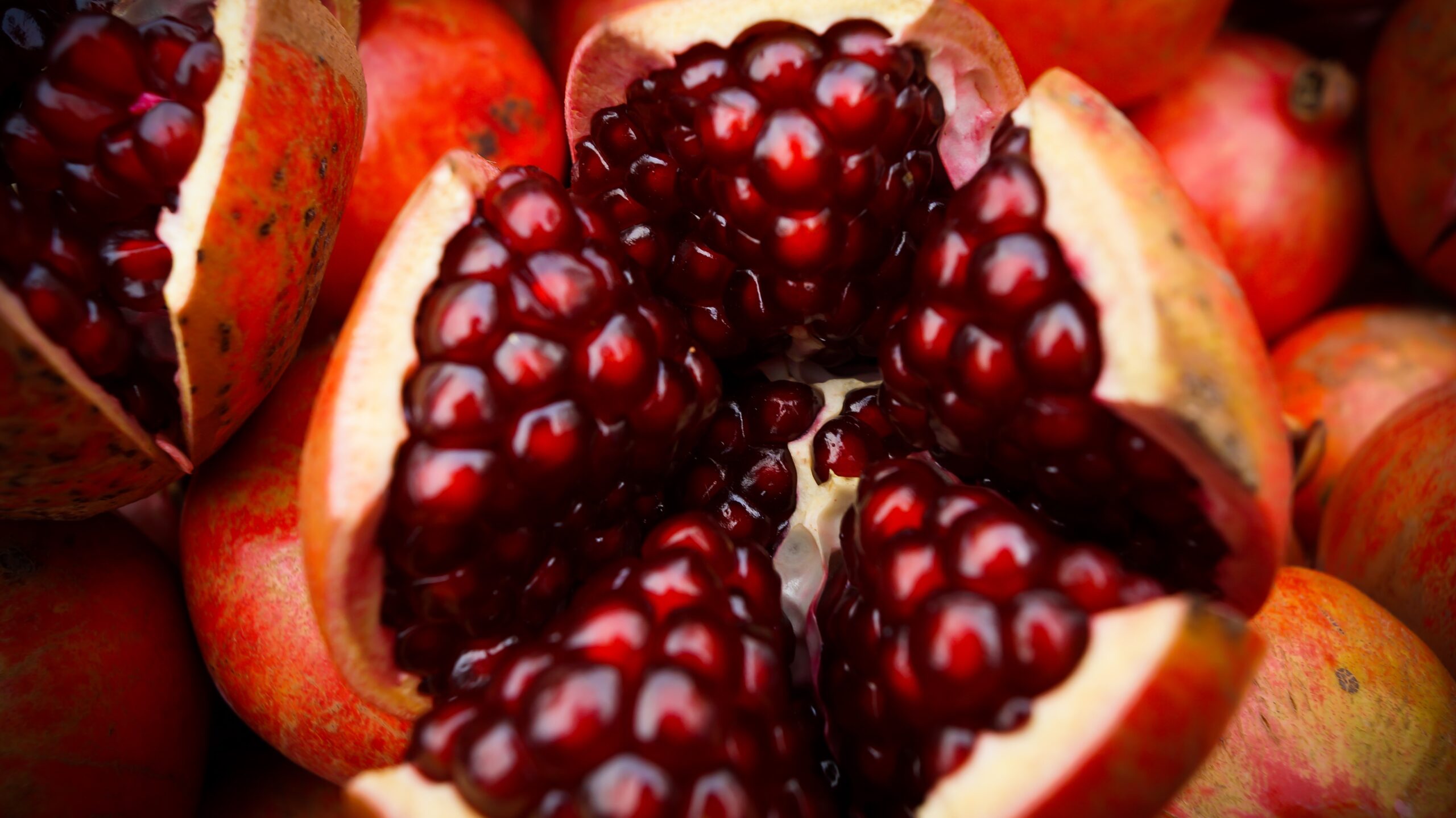
Photo by Arjun Kapoor on Unsplash
I love pomegranates. They’re so juicy, sweet-tart, refreshing—an explosion of flavor in your mouth! Pomegranates show up in markets during winter in the Pacific Northwest, and I always grab plenty of them to enjoy.
This year I’ve been getting them by the dozens in my Imperfect Produce box. They’ve been absolutely perfect, maybe a shade smaller in diameter than those in the grocery store, but perfectly ripe, delicious, and a great price. You can order your own and save $10 off your first order by using this link: http://imprfct.us/v/cindy_2680.
Keep reading to learn about pomegranates and a fast and easy way to get all those seeds out with less than a minute’s work! And get a fun recipe for using pomegranate seeds.
About Pomegranates
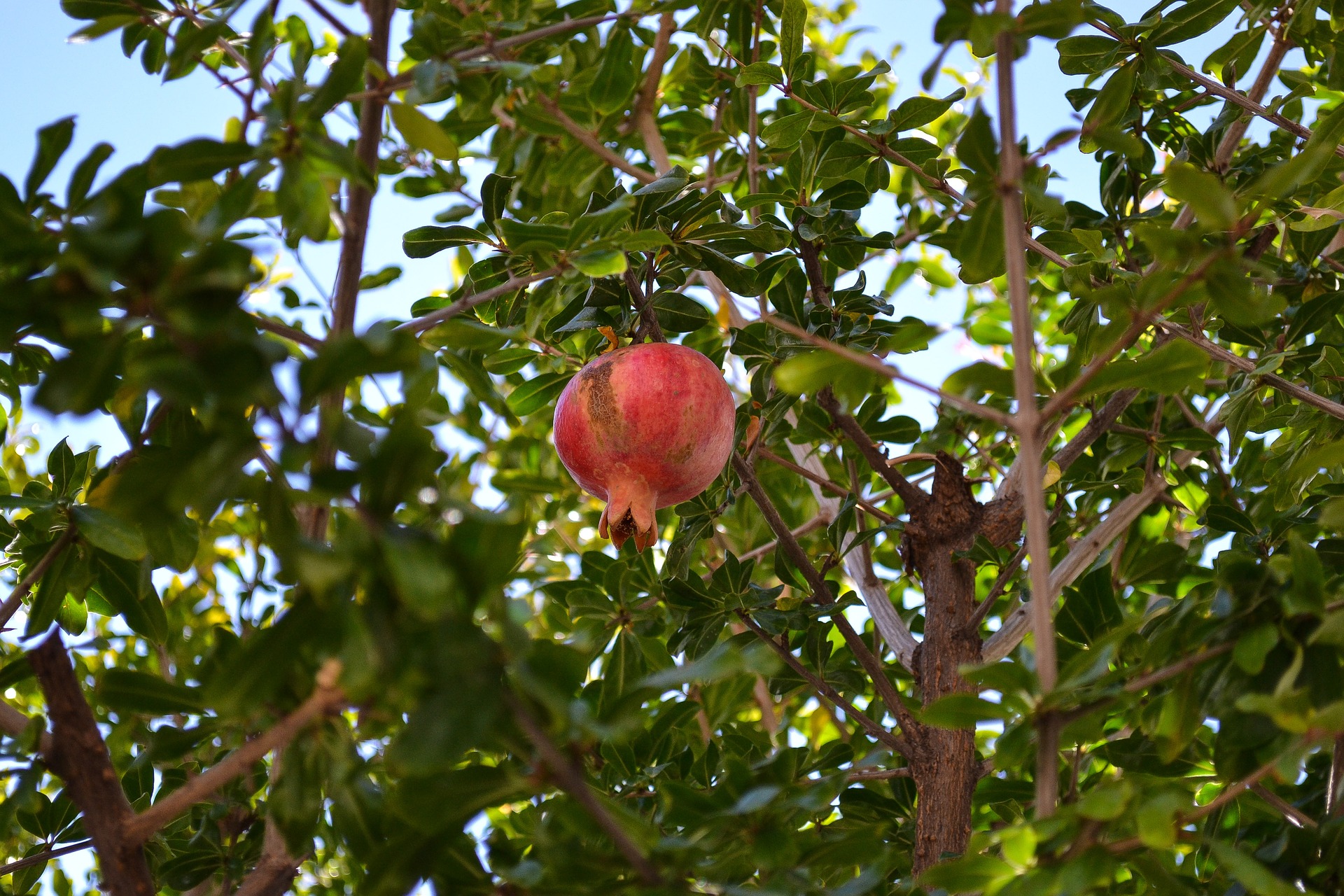
Pomegranate shrub. Photo from Pix59ay on Pixabay.
Pomegranates grow in warm locations, not Seattle, on shrubs or small trees. This surprised me the first time I ever saw pomegranates growing, on shrubs surrounding a parking lot in Lodi, California. They have a rich history, ranging from Iranian mythology for making soldiers invincible, immortality in ancient Chinese culture, and fertility in ancient Egypt. Pomegranates are still prominent symbols in many cultures, including Greek, where pomegranates are broken on the ground on New Years Day and are given as housewarming gifts to promote luck and fertility.
Nutrition Info
A single pomegranate yields about ¾ cup of seeds. There is a myth out there that all pomegranates have 613 seeds, but they actually range from 200-1,400.
In a ½ cup serving you get (information from the USDA FoodData Central database):
Calories: 70
Protein: 1 g
Fat: 1 g
Carbohydrates: 16 g
Fiber: 3 g
Sugars: 12 g
Calcium: 20 g
Vitamin C: 9 mg
A report from the University of Florida lists a whole host of benefits from eating pomegranates, from heart health, reduced cancer risk, and anti-inflammatory effects against arthritis and effects of aging. These benefits come from the high concentrations of phytochemicals, 122 of them to be exact, which are potent antioxidants (see Eat the Rainbow for more information about the benefits of phytonutrients).
Picking Out the Best Pomegranate
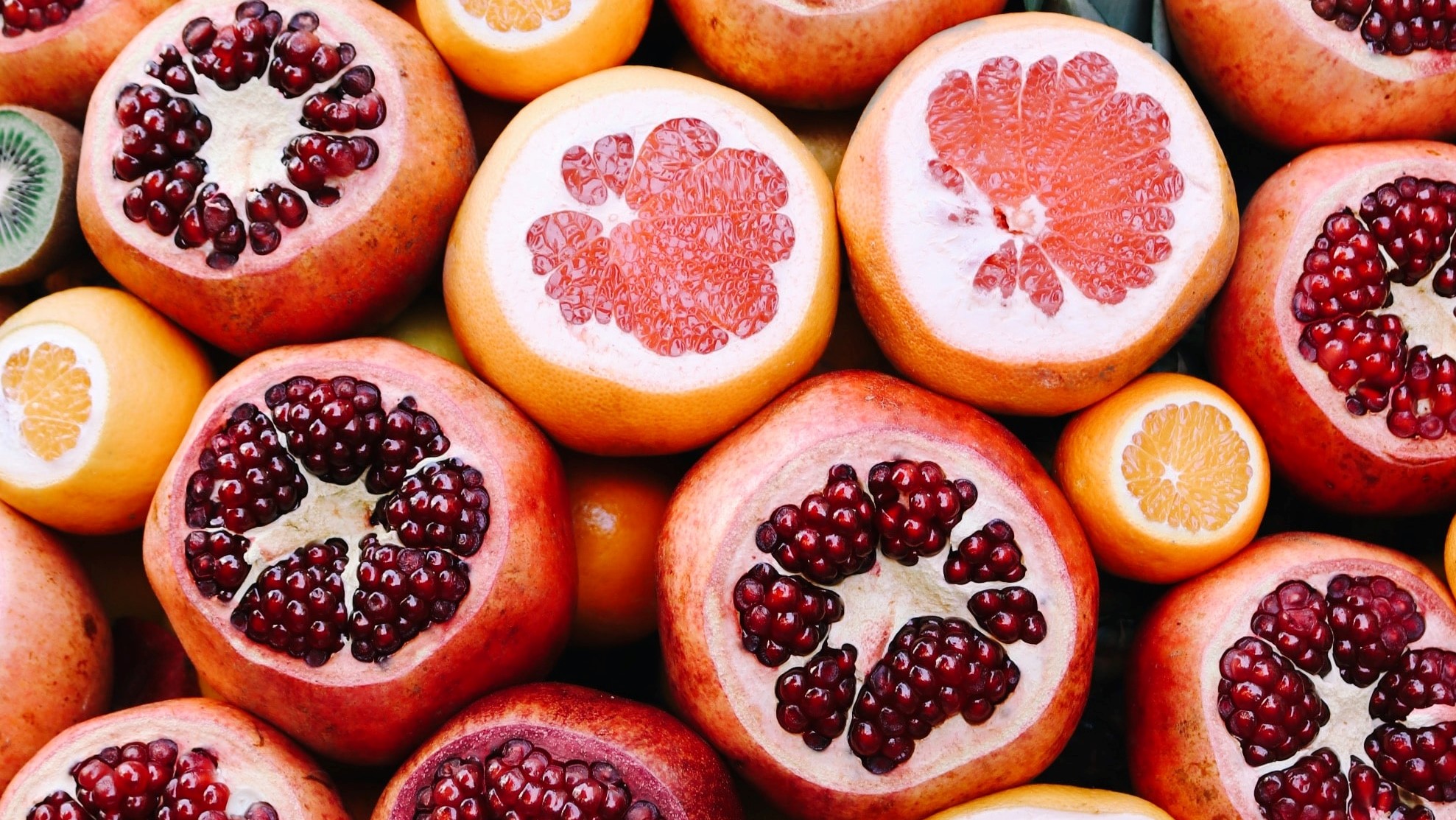
Select pomegranates the same size as grapefruits. Photo by Dana Banana on Unsplash
Select fruits about the size of a grapefruit, somewhat square, heavy for their size, and deep red. The crown of the fruit (prominent blossom end) should be turned slightly inward. Skin should be smooth and taut, shouldn’t wrinkle or ripple when rubbed, and should be difficult to scratch with your fingernail.
Opening a Pomegranate
I remember trying to open my first pomegranate! I was probably in about fifth grade and while watching a movie as a family, we saw someone break a pomegranate open over a rock—I’d never seen such a fruit before and was amazed. My mom picked one up for us during her next grocery trip. We marveled at it, not sure what to do, and decided to cut it in half with a knife rather than try breaking it on the ground outside. Well, as you probably guessed, bright red pomegranate juice spurted everywhere, staining our hands, cutting board, and clothes! But we enjoyed every bit of that juicy pomegranate, standing over the sink to protect our house from the juice.
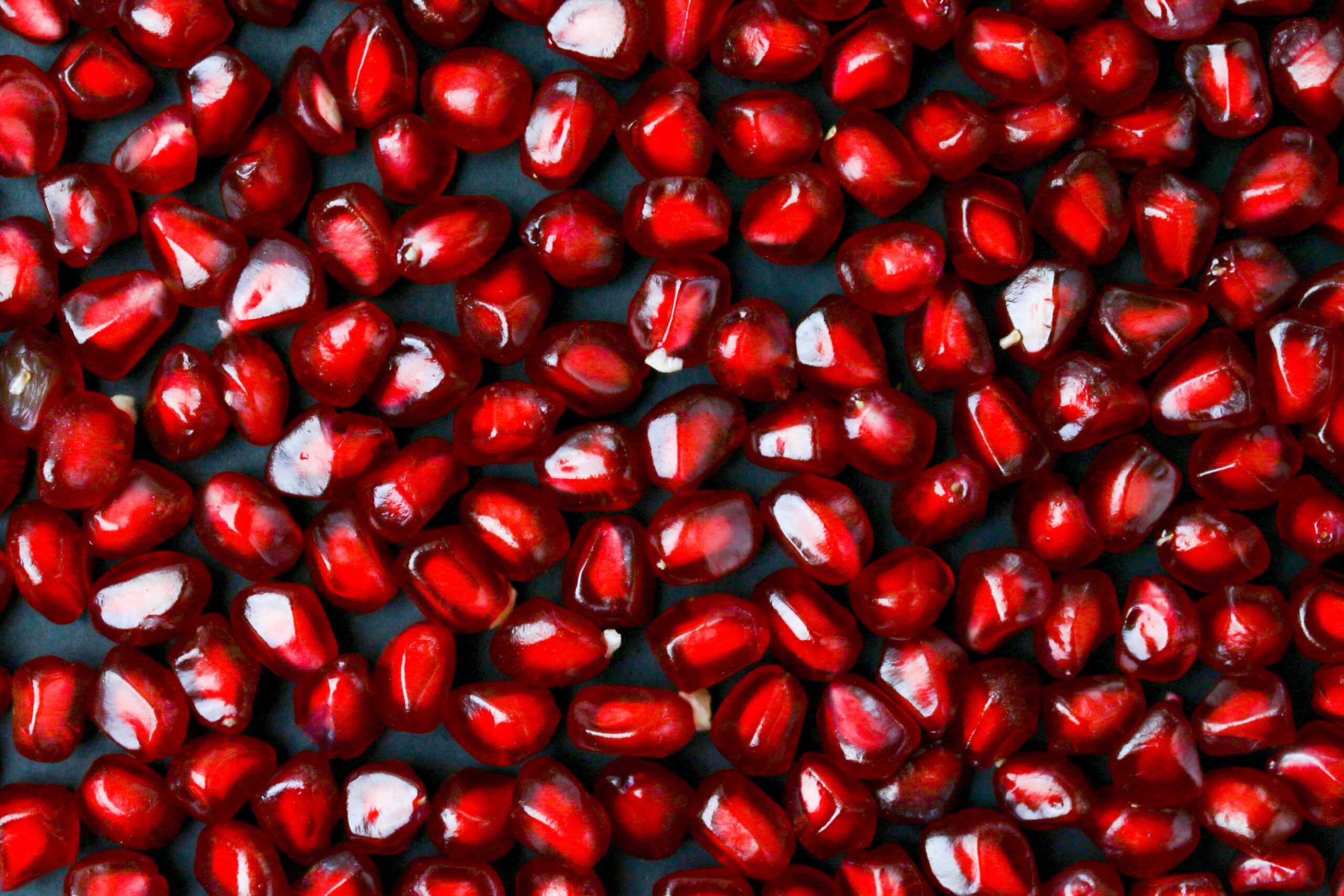
This is your goal…seeds, but how do you get them out of the pomegranate? Photo by Tamanna Rumee on Unsplash
I continued to eat pomegranates this way, losing tons of juice and painstakingly picking out seeds one-by-one for an hour before gathering a cupful them. I researched and tried different methods, including cutting and peeling pomegranates submerged in a sink of water, and nothing really worked until I discovered an amazing method to seed a pomegranate in a minute flat! There’s no squirting pomegranate juice, no sink of water, and you get all of those delicious seeds with minimal work.
Watch my video and learn how easy it is:
Removing Pomegranate Seeds
Fast and easy method to remove pomegranate seeds by Cindy Thompson of Trimazing! Health & Lifestyle Coaching. https://trimazing.com/ Reduce Food Waste with Imperfect Foods Boxes. They have amazing groceries, for 30% less than grocery stores, delivered to your door. It’s completely customizable and they have tons of great produce and vegan options to choose from.
Isn’t that great?!? Give it a try and you’ll see why it’s so easy for us to eat pomegranates nearly every day in our house when they’re available in the market. It’s way less expensive and more environmentally friendly to get your seeds right out of a pomegranate, not a plastic container at the store.
Again, save $10 off your first Imperfect Produce order by using this link: http://imprfct.us/v/cindy_2680 and get your own beautiful perfectly imperfect pomegranates.
And if you’re looking for a fun and delicious way to eat your pomegranate seeds, try making my Vegan Gunkan Maki Sushi, a vegan twist on traditional sushi without fish roe. It’s the perfect bite of sweet, spicy, salty, tangy, and umami (learn more about these flavors in That’s Tasty!)!
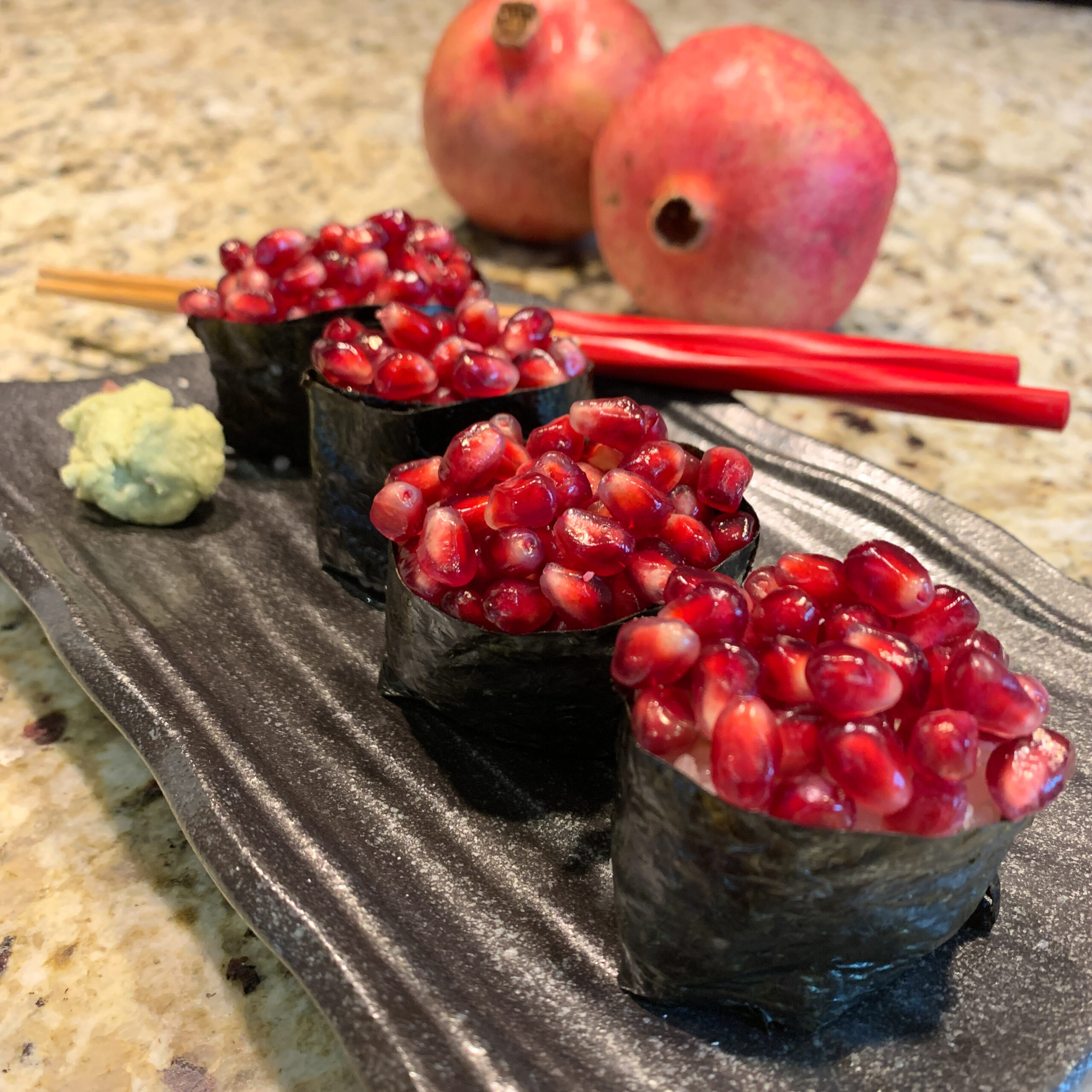
Vegan Gunkan Maki Sushi. Photo by Cindy Thompson, Trimazing.com
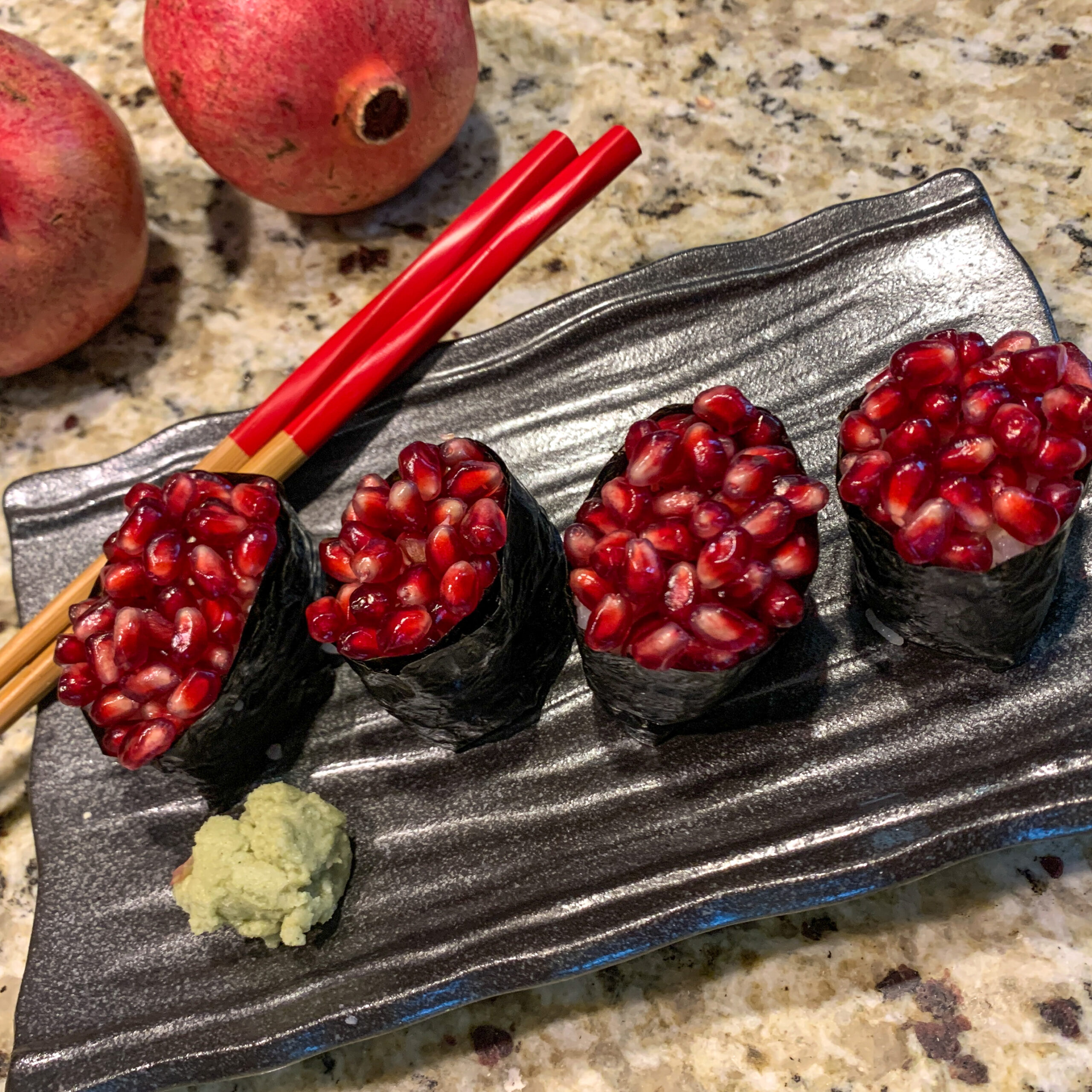
Vegan Gunkan Maki Sushi. Photo by Cindy Thompson, Trimazing.com
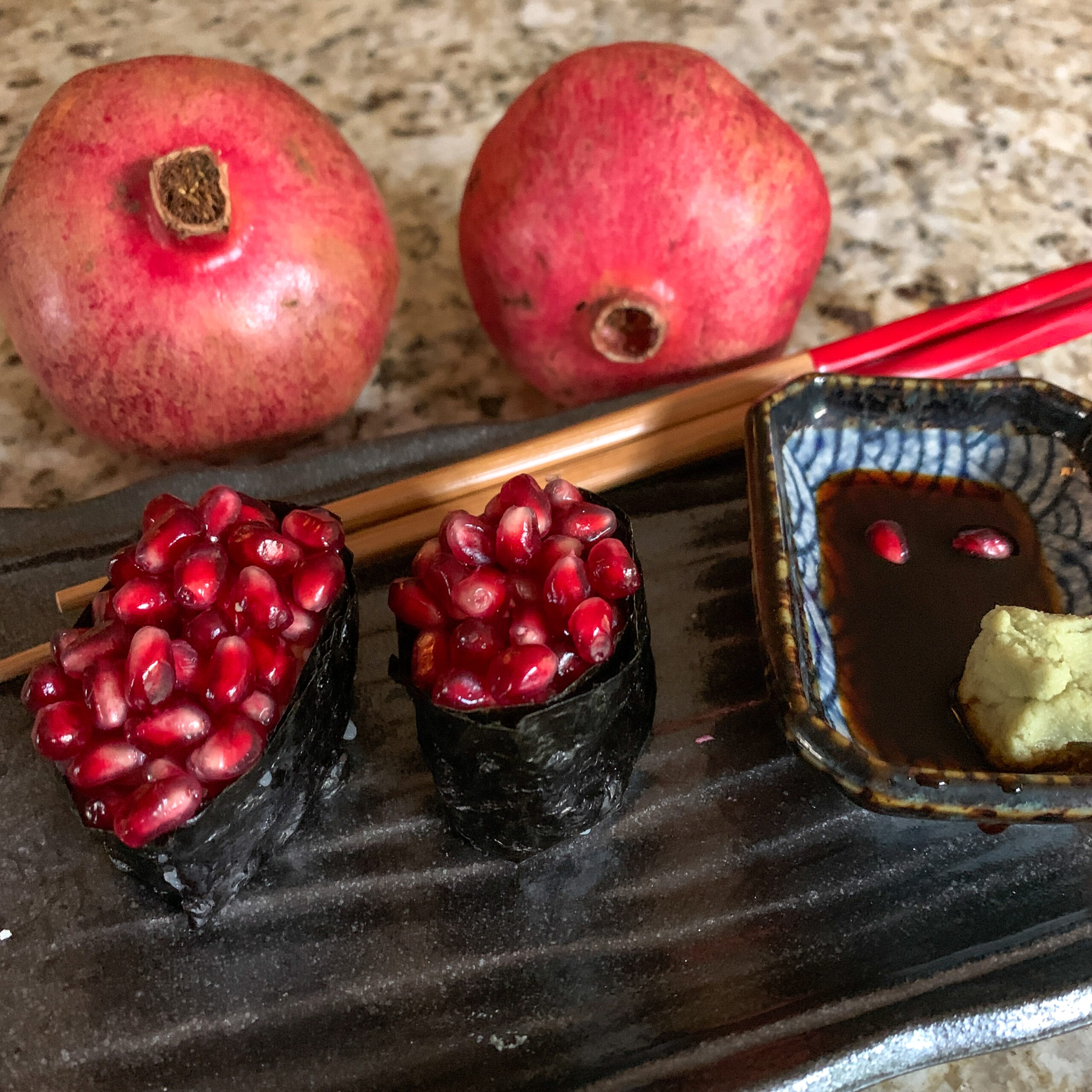
Vegan Gunkan Maki Sushi. Photo by Cindy Thompson, Trimazing.com
Vegan Gunkan Maki Sushi
Ingredients
- 3 cups prepared sushi rice
- 2 tbsp seasoned rice vinegar
- 3 sheets nori seaweed each cut into 6 equal strips, 1 inch by 6 inch
- wasabi paste prepared
- ¾ cup pomegranate seeds
Instructions
- Prepare the sushi rice per package directions. Mix in the seasoned rice vinegar and allow to cool to room temperature.
- Cut nori seaweed sheets into 6 equal strips each, 1x6 inch strips. Set aside.
- Wet your hands slightly. Shape 1 tbsp of prepared sushi rice into an oblong. With smooth side facing out, wrap a strip of nori around the rice. Crush a cooked rice grain on the end of the strip so it sticks at the end of the wrap.
- Dab some wasabi paste onto the top of the rice with your finger and flatten the top of the rice so that it's about ¼ below the top edge of the nori wrap.
- Spoon pomegranate seeds onto the rice so it's contained within the nori wrap.
Nutrition
Do you like this post? Please share....
[mashshare]
2 Comments
Leave a Comment
If you liked this post, you might like one of these:
Categories:
Tags:

[Trī-māz-ing]
Cindy wants you to be Trimazing—three times better than amazing! After improving her health and fitness through plant-based nutrition, losing 60 pounds and becoming an adult-onset athlete, she retired from her 20-year firefighting career to help people just like you. She works with people and organizations so they can reach their health and wellness goals.
Cindy Thompson is a national board-certified Health and Wellness Coach, Lifestyle Medicine Coach, Master Vegan Lifestyle Coach and Educator, Fitness Nutrition Specialist, Behavior Change Specialist, and Fit2Thrive Firefighter Peer Fitness Trainer. She is a Food for Life Instructor with the Physicians Committee for Responsible Medicine, Rouxbe Plant-Based Professional, and Harvard Medical School Culinary Coach, teaching people how to prepare delicious, satisfying, and health-promoting meals.
She provides health and lifestyle coaching at Trimazing! Health & Lifestyle Coaching. Cindy can be reached at info@trimazing.com.
Subscribe to the Trimazing Blog
Receive occasional blog posts in your email inbox.
Subscribe to the Trimazing Blog
Receive occasional blog posts in your email inbox.

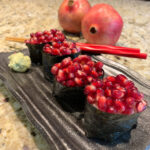



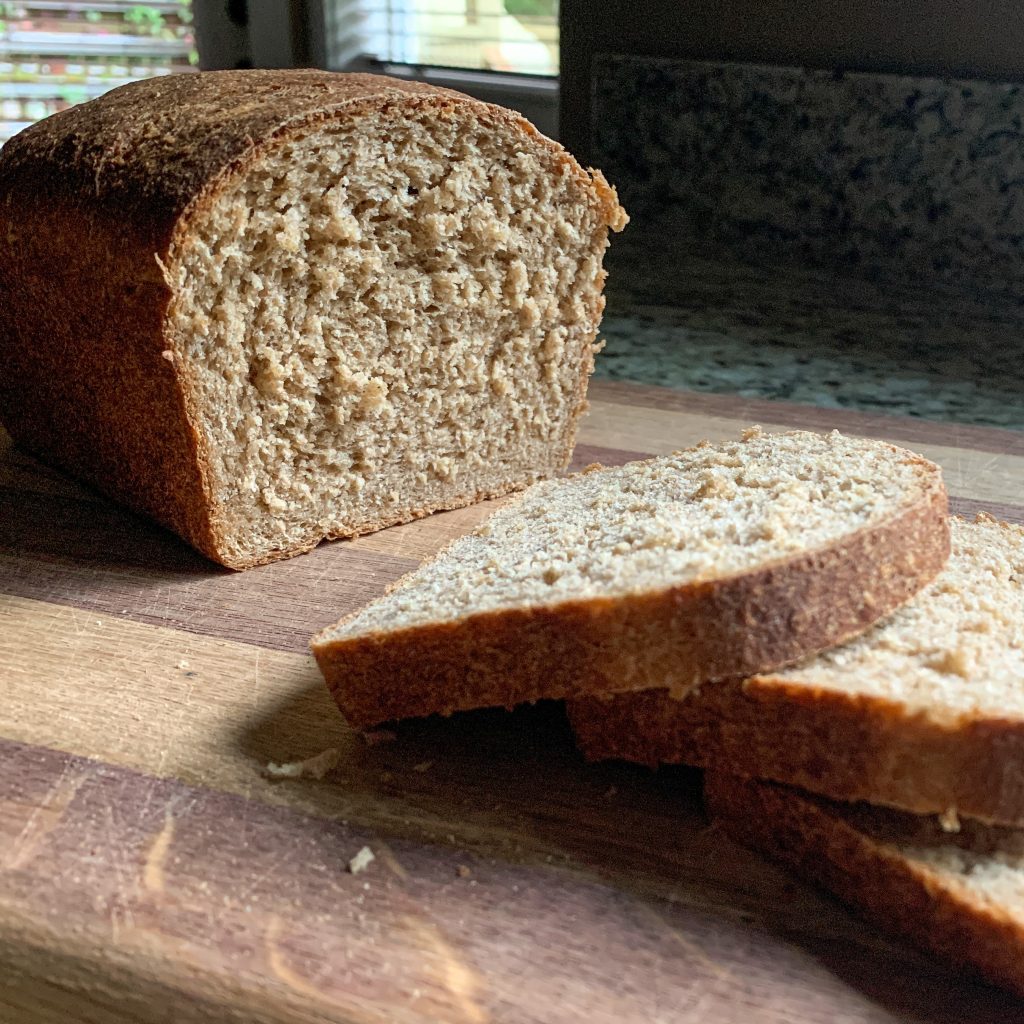
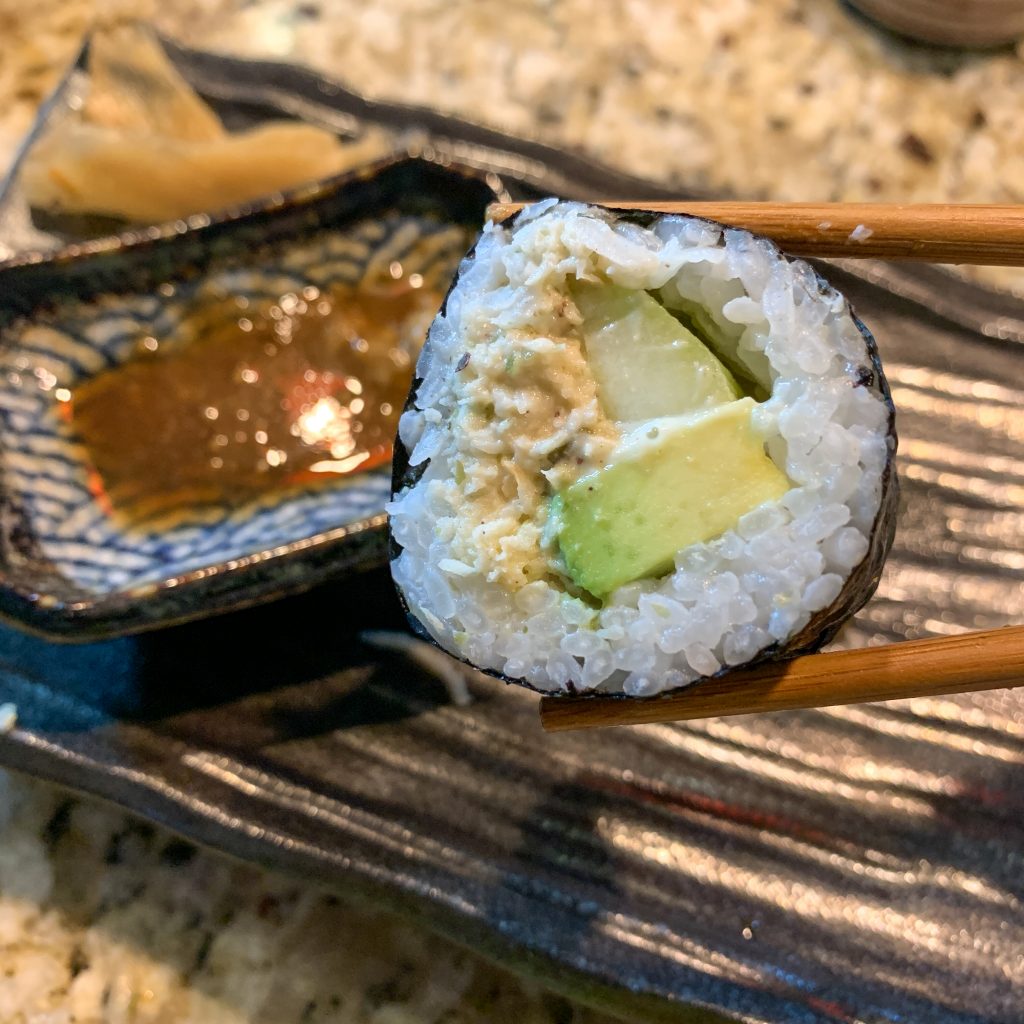



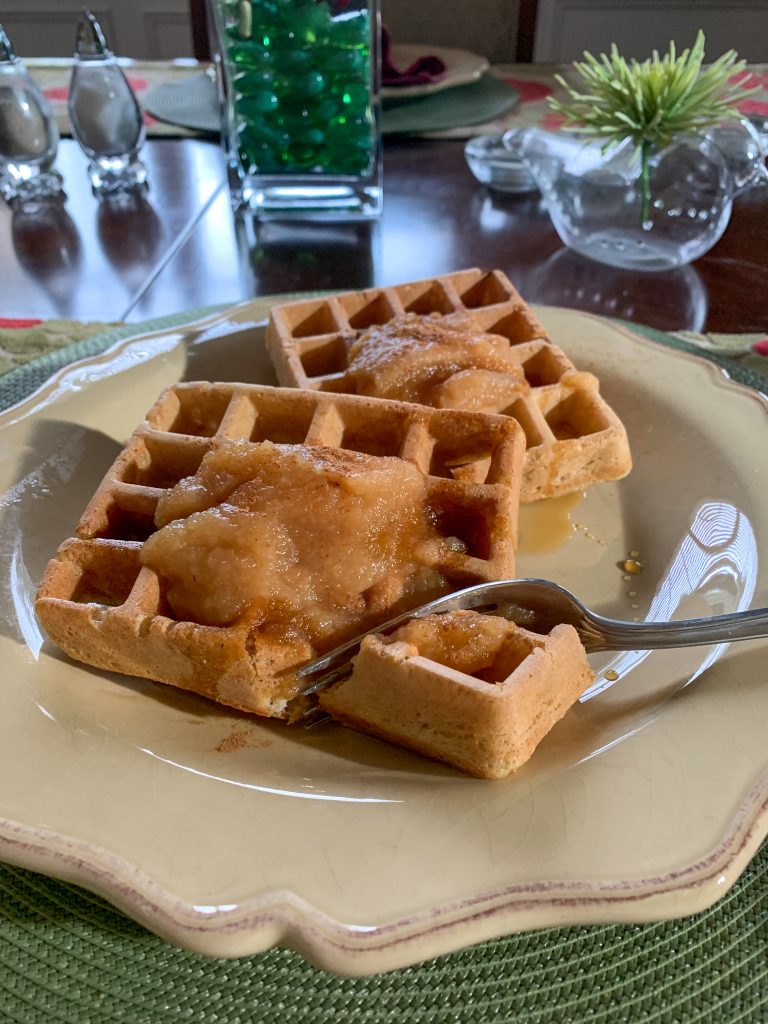
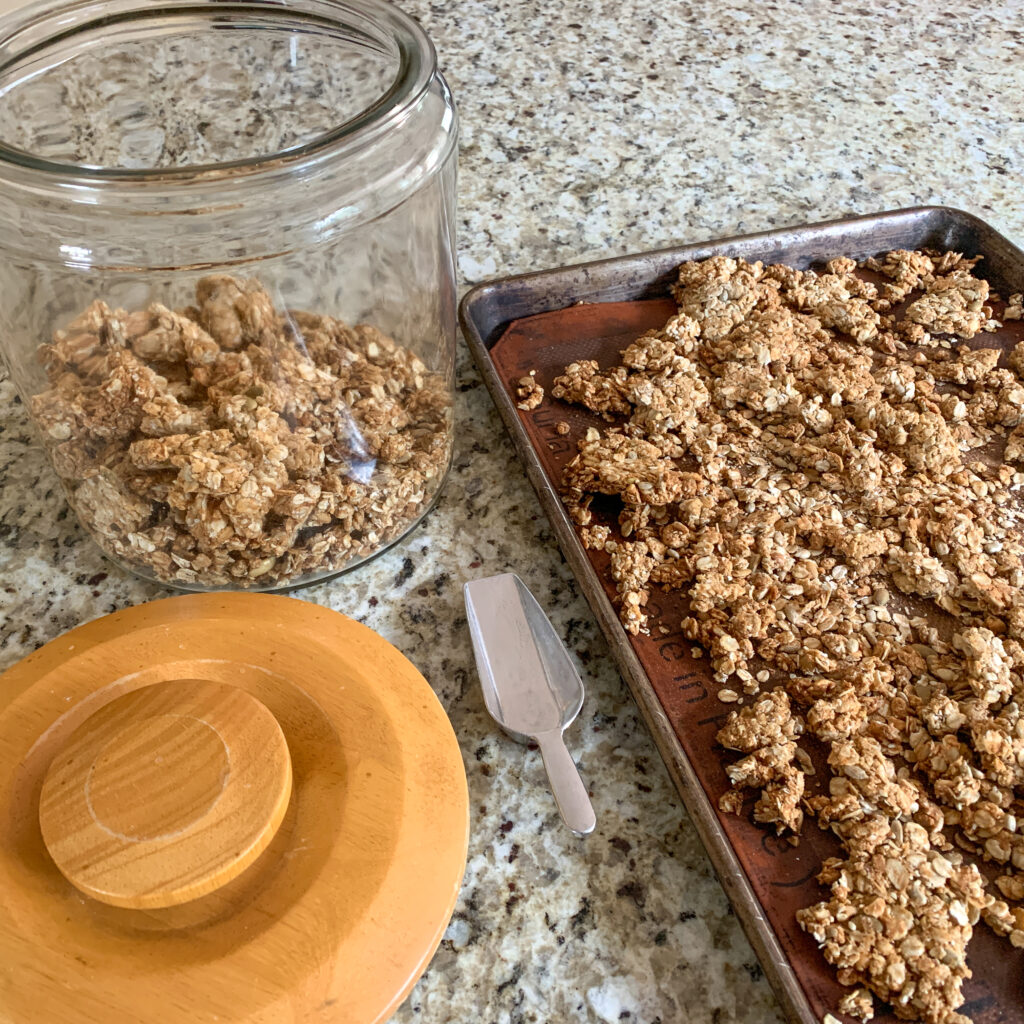










I watched your video on getting pomegranate seeds out! That was fabulous! Thanks for the hot tip. Really enjoying all of my whole food plant-based eating since we took your class!
Wonderful! Go gather as many pomegranates as you can and ENJOY! So glad your WFPB journey is going so well and I look forward to seeing you again in a future class.